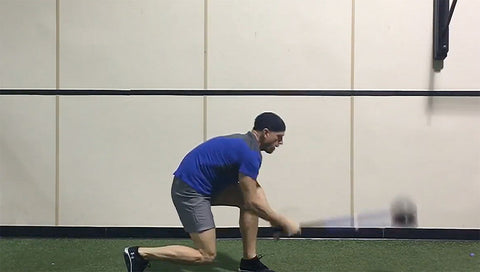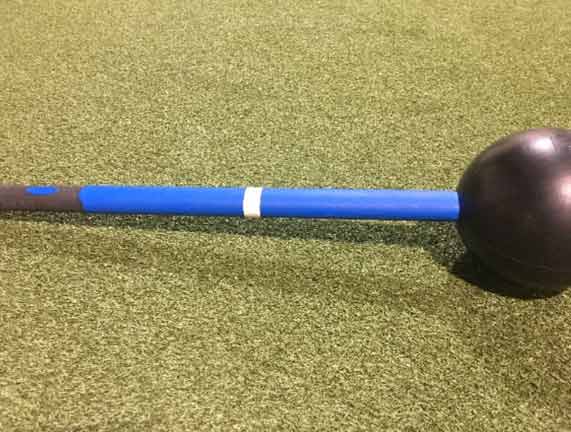
A long time ago in a gym far, far away, I was a new trainer with the ink barely dry on my first certification from ACE. A new member at the health club where I worked came up to me and she was quite upset. She was angry that she’d been doing the workout I created for her, but had recently injured her back while putting her child in the car seat.
As was common practice back then, I was creating strictly machine-based programs for new members during the free session they received with their membership. This experience with this clearly dissatisfied health club member got me thinking: Was the machine-only program I used for these free sessions really preparing people for life?
Fitness leadership means providing clients with continually challenging workouts that also follow sound principles of movement-based training. It merges high intensity with high quality. The former is in ever-increasing abundance in the fitness world, often at the expense of the latter. High intensity is easy to find. High intensity with high quality is considerably less common.
The best concepts are the ones that immediately translate to real-world, real-life experiences. They are the ones that provide an easy bridge between an idea and an experience everyone has in his or her own body. Importantly, this helps to eliminate the disconnect many people experience between the exercises they do during a workout and the movements they perform in everyday life.
As a health and exercise professional, you have a unique opportunity to help clients make the connection between life movement and exercise. When we choose equipment people like to use to develop workouts intense enough to create change, and ensure that those workouts translate well to life, the program is far more likely to “click” for the people we serve.
Making that connection between movement training and real life is at the core of the ACE Integrated Fitness Training® (ACE IFT®) Model. The Functional Movement and Resistance Training component provides a framework for developing stability or mobility as appropriate in a specific area of the body (phase 1), integrating it into a full-body movement (phase 2), adding external load and creating a stimulus for strength gains (phase 3) and increasing movement speed to develop bodily control and power (phase 4).
The ACE IFT Model features five distinct movements:
The following workout features the MostFit Core Hammer, was designed using the ACE IFT Model as a guide, and highlights each of these movements (see ACE IFT Model Movements and Fitness Characteristics below).
The MostFit Core Hammer eliminates the need for a bulky tire for sledgehammer exercises. It’s versatile enough that you can strike it against the ground, a wall, driveway or a cement floor. Or, you can use it like a mace to develop shoulder strength, mobility and stability. The long lever and distally loaded end provide endless options for unilateral and asymmetrical strength challenges, core exercises and rotational, mobility and stability work—all of which are featured in the workout presented here. It is available in 8-pound (3.6 kg) and 12-pound (5.4 kg) sizes. The 8-pound version is used in the videos that accompany each exercise.

Hand positioning affects the intensity of the exercise due to the physics of rotation. In the photo above, the piece of white tape in the middle of the blue area of the handle marks the spot where your hand is positioned when performing most of the exercises.
Some additional points to keep in mind when using the Core Hammer:
This workout features supersets of two exercises (exercises A and B). Perform each movement, rest for about 20 seconds between each superset, and complete each superset two to three times depending on available time and your client’s current ability. Perform one set of the “Finisher” exercise at the end.
|
Super set |
Exercise A |
Reps |
Exercise B |
Reps |
|
1 |
Walking Lunge Hammer Drop |
10 per leg |
Pivot Push-up (switch hand positions each set) |
8-12 |
|
2 |
Single-arm Swing |
8 per arm |
Elevator Squat Hammer Drop |
5-6 reps each of two positions |
|
3 |
Side-to-side Ground Strike |
10 per side |
Horizontal Swing |
5 per side |
|
4 |
Single-arm Shoulder Press |
10–12 per arm |
Single-arm Horizontal Row |
10-12 per arm |
|
5 |
Crouch to Plank (option to add triceps press) |
10 |
Side Lunge Thrust
|
8 per side (contralateral/ipsilateral) |
|
Finisher |
Step Back Lunge to Strike (stay low) – 60 seconds, max reps, count each strike |
|||
|
Exercise |
ACE IFT Model Movements |
Fitness Characteristics |
|
Walking Lunge Hammer Drop (front lunge option if space is limited) |
Single-leg, pull |
Balance, coordination, mobility, strength |
|
Pivot Push-up |
Push, (anti-)rotation |
Coordination, mobility, strength |
|
Single-arm Swing |
Bend and lift, pull, rotation |
Agility, coordination, flexibility, mobility, power |
|
Elevator Squat Hammer Drop “elevator” = 2 hold positions that change with 2 hammer drops |
Bend and lift, pull |
Coordination, flexibility, mobility, strength |
|
Side-to-side Strike |
Single-leg, pull, push, rotation |
Agility, balance, coordination, mobility, power |
|
Horizontal Swing |
Pull, push, rotation |
Coordination, flexibility, mobility, power |
|
Single-arm Shoulder Press |
Push |
Balance, flexibility, mobility, strength |
|
Single-arm Row |
Pull, single-leg |
Balance, flexibility, mobility, strength |
|
Crouch to Plank (triceps press option) |
Bend and lift, push |
Balance, coordination, flexibility, mobility, strength |
|
Side Lunge Thrust |
Single-leg, rotation |
Agility, balance, coordination, strength |
|
Step Back Lunge to Strike |
All five movements |
Agility, balance, coordination, mobility, power |
Successfully manipulating a large, extended weight like the Core Hammer easily maps to many life movements. Changing the location of the grip on the strength movements will provide insights on strength and ability as this greatly changes the rotational forces. And let’s face it, there is a lot of fun in swinging a hammer around. Many clients will enjoy the challenge as well as the thrill of swinging the hammer.